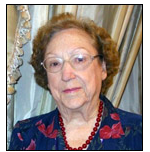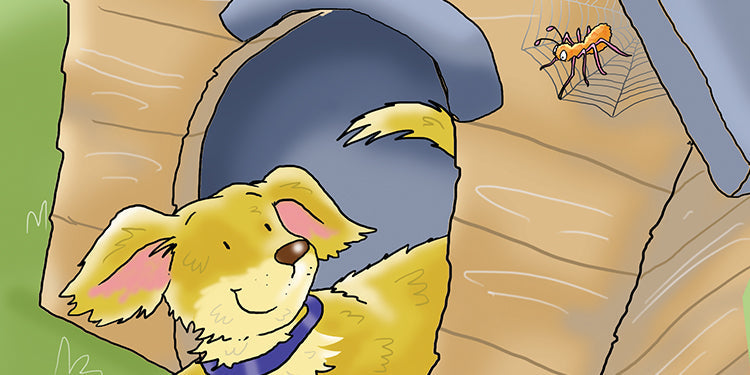
This is a guest blog post by Dr. Geraldine Haggard, who is a retired teacher, Reading Recovery teacher leader, author, and university teacher. She spent 37 years in the Plano, TX school system. She currently tutors, chairs a committee that gifts books to low-income students, teaches in her church, and serves as a facilitator in a program for grieving children.
This is the third post in a series of posts on teaching and using leveled books for science in kindergarten. To read the first post, click here . To read last week’s post, click here . To read the next post in this series, please check back next week. You can always subscribe to our blog to get our guest bloggers’ new posts in your inbox.
Let’s begin this post by continuing from where we left off last week, with another set of classroom activities. To view last week’s classroom activity, please click here .
Book Three:
A House for Me
To begin, use the book,
A House for Me
, from the
Kaleidoscope Collection
, with an Elmo or classroom projector as a read aloud. The front of the book might be used on the Elmo or classroom projector to introduce the title’s characters to the classroom. You can then do a read aloud. In the book, the sentence, “I need a house for me”, is on each page. Introduce the sentence to the children and ask them to repeat it with you each time you read it. Explain to the children that the character, the Spider, does not have a home and visits his neighbors, hoping to find one. Read the book slowly, sharing the pictures and asking the children what each home presented is called. Use a different voice for the spider. After completing the entire story, ask the students who helped the spider and how. After this, the last picture might also be shared on the Elmo or classroom projector. What does the dog call his home? Although the Spider character does not call his home by a name, ask the children if they can tell us the name of the spider's home.
After this, in the classroom, use two hula hoops or an enlarged Venn diagram, to compare the dog and the spider. Fill in differences first. (For example: What are their homes called? How large are the two living things? How does each animal get its food?) The center of the diagram can include: is a living thing, eats in home, needs a home. Students may think of other ways the two animals are alike or different. Ask the children why they think each animal is similar or different, and invite all the children to help make the decisions on what to include in the diagram. Inform the children that scientists do this kind of thinking and praise their thinking and sharing.
After class, the students can visit with their parents and talk about their own homes. The next day, in the classroom, provide a sharing time and allow the students to talk about their homes and what they learned about them. Discuss how long each child has lived in his or her home, and what exactly his or her favorite things to do are, while at home. How many people live in the home? Where exactly is the home? Does each of the children know their street address
Introduce the word 'shelter' and invite the children to visit with their families to discuss how their homes provides shelter. Provide an activity sheet for the students and ask them to record examples of how their homes provide shelter and personal needs. The next day, the students can draw a picture on one way their home provides shelter on a sheet of drawing paper. This can be done while you are with guided reading groups. Later, invite them to sit in groups of three or four and share their findings. The groups can then share the group findings with the entire class. Collect their drawings and make a list of ways that homes provide shelter. Create a classroom bulletin board titled, “Why We Need Shelter”, and include the students’ findings as well as some of their pictures. The children can help create the display.
During this part of the study, a museum collection can be displayed by both the children and the teacher. (For example: shells, bird nests, an ant farm, a fish in a bowl, a small aquarium, a web, etc. ) Each unique home can then be labeled and either individual children, or groups of children, can write captions for the compiled museum collection. In the captions, include what lived in the home, and where the particular home might be found. The captions can also include the labels of 'living' or 'non-living'.
 Book Four:
We Are Thirsty
Book Four:
We Are Thirsty
For the second section of this blog post, the wordless picture book, We Are Thirsty , from the series, Zoozoo Into the Wild , can be used to introduce the fact that living things need water to drink, in order to live. On the inside of the back cover of this title, a synopsis of the book, for teacher use, can be found. Use the first two activities suggested on the inside of the back cover. Use an Elmo or classroom projector to share the book’s cover and pages. Ask the children to talk about why the zebras, in the book, might be thirsty. Ask questions like: When do they get thirsty? Where do they find water to drink? Where do the children find water to drink? Where do the zebras find water? Why are the zebras living things? Do the children think that all living things need to drink water? Using the pictures of scenery in the book, ask the students where they think the zebras live. How do the students know this? After, revisit the last picture in the book, and discuss how the zebras must have felt after they drank the water.
In the classroom, display two living plants that look alike and similar. Water one plant, but do not water the other plant. On a daily basis, the children can look at the plants and create a record of what they see happening to the plants over a period of time. Ask the children what exact conclusions can be made about the two plants? In addition to this, the children might plant seeds in small containers in the classroom together, bring their plants home, and watch how their own plants grow at home. They can then share what is happening to their plants and possibly record, on a calendar, comments about when they water their plants and what they have observed about their plants.
This is the end of Part 3 in this series of blog posts on teaching and using leveled books for science in kindergarten. To read the first post in the series, click here . To read the previous post, click here . To read the next post in this series, please check back next week. As always, you can subscribe to our blog to get new posts in your inbox.
~~~
Geraldine Haggard is the author of several books from our
Kaleidoscope Collection
. To download information sheets with key features about the
Kaleidoscope Collection
and
Zoozoo Into the Wild
series, which contain the books mentioned in this post, click the images below.





















































